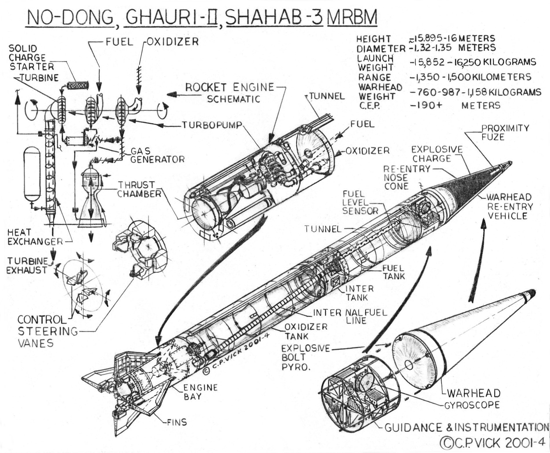Penguin
ELITE MEMBER

- Joined
- Jan 11, 2009
- Messages
- 13,047
- Reaction score
- 56
Anything below 1 MW power is useless against fast moving targets like ballistic missiles. The main problem is the power generator that these weapons need not the laser itself.
I can see them eventually being deployed on large naval vessels or fixed site ground units but we still don't have a 1 MW power plant that is light and mobile enough to be carried by a bomber, let alone a drone.
Here is a calculation I did in another thread about the current lasers being used:
Your quoted explanation talks of using a laser to get warheads. This is not the case. The laser would be targeted at the missile carrying the warheads. The missile body carries fuel and oxidizer to power a liquid fuel rocket motor.

Or they use a solid fuel rocket motor

Either way, you just need to burn a small hole in thin outer skin, possible fuel tanks, to explode rocket fuel (whether solid or liquid)
At Lockheed Martin Corp a 30-kilowatt fiber laser (prototype ground-based laser weapon called the Advanced Test High Energy Asset or ATHENA) was used to burn through the engine manifold of a small truck in a matter of seconds from more than a mile away.
Lockheed Martin Laser and Sensor Systems is developing a 60-kilowatt fiber laser module for a truck-mounted laser weapon system intended to shoot down enemy unmanned aerial vehicles (UAVs), rockets, artillery rounds, and mortars as part of the U.S. Army High Energy Laser Mobile Demonstrator (HEL MD) project.
Lockheed Martin Space Systems is demonstrating prototype high-energy laser tail gun intended to protect combat aircraft from attacks from the rear as part of the Aero-Adaptive/Aero-Optic Beam Control (ABC) program of the U.S. Defense Advanced Research Projects Agency (DARPA) in Arlington, Va. The project seeks to give 360-degree coverage for high-energy laser weapons operating on military aircraft.
Through a technique called spectral beam combining, several fiber laser modules form one powerful, high-quality beam that provides greater efficiency and lethality
http://www.militaryaerospace.com/articles/2015/03/high-energy-laser.html
Not quite there yet, in terms or range, but coming to the air soon. It is only a matter of time before sufficient range is achieved. And then there is spaced based laser ;-)
http://webcache.googleusercontent.c...tm+&cd=3&hl=nl&ct=clnk&gl=nl&client=firefox-b






